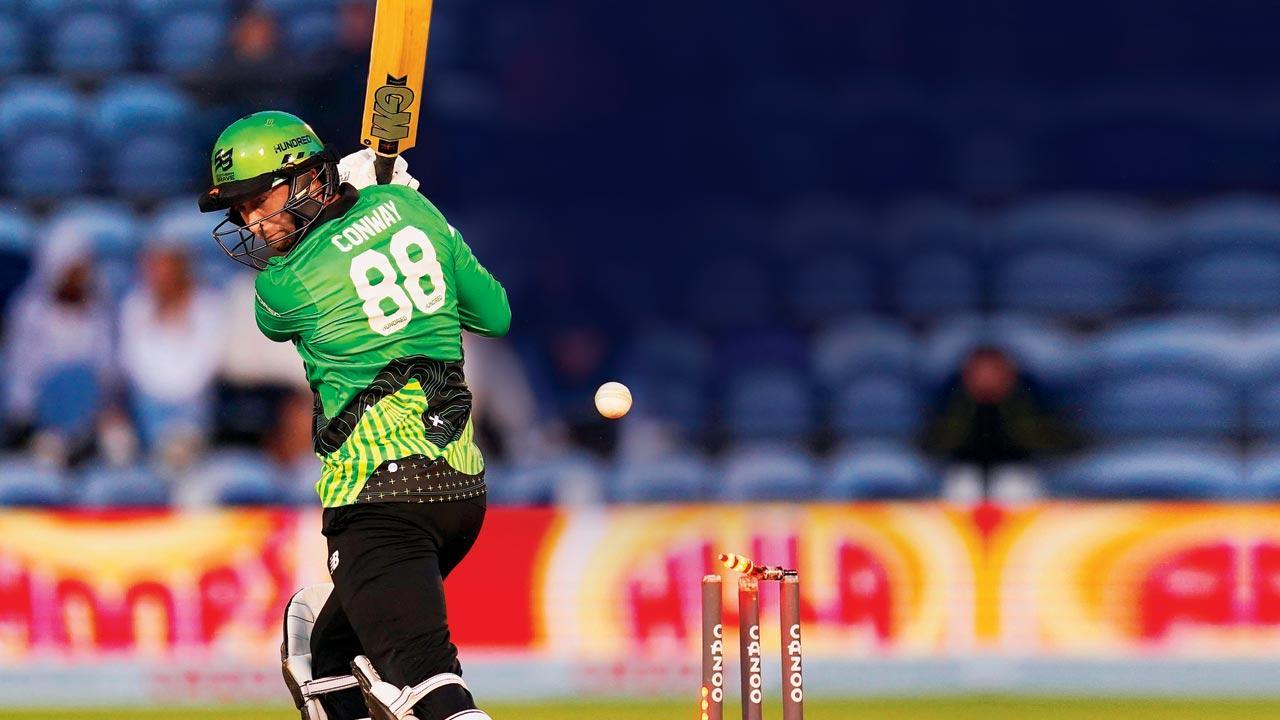The Hundred is a big zero
Updated On: 01 August, 2021 10:06 AM IST | Mumbai | Ian Chappell
You don’t make changes simply for change’s sake; what cricket’s evolution needs is improvements. ‘Every ball counts.’ Now there’s a revelation; if that hasn’t always been the case then I wasted the bulk of my first 36 years

Southern Braves’ Devon Conway is bowled by Jake Ball of Welsh Fire during The Hundred match at Cardiff last Tuesday. Pic/Getty Imges
Throughout my playing career, I believed there were two possible solutions to a problem, a simple one and the other more complicated.
I also believed that to the benefit of Australia, England would regularly choose the complicated solution. They’ve done it again. To overcome the perceived problem of a public not fully conversant with cricket, they’ve concocted another form of the game—The One Hundred. That’s right, they’ve reduced by a mere 20 balls a format that was extremely popular with players and the public.



